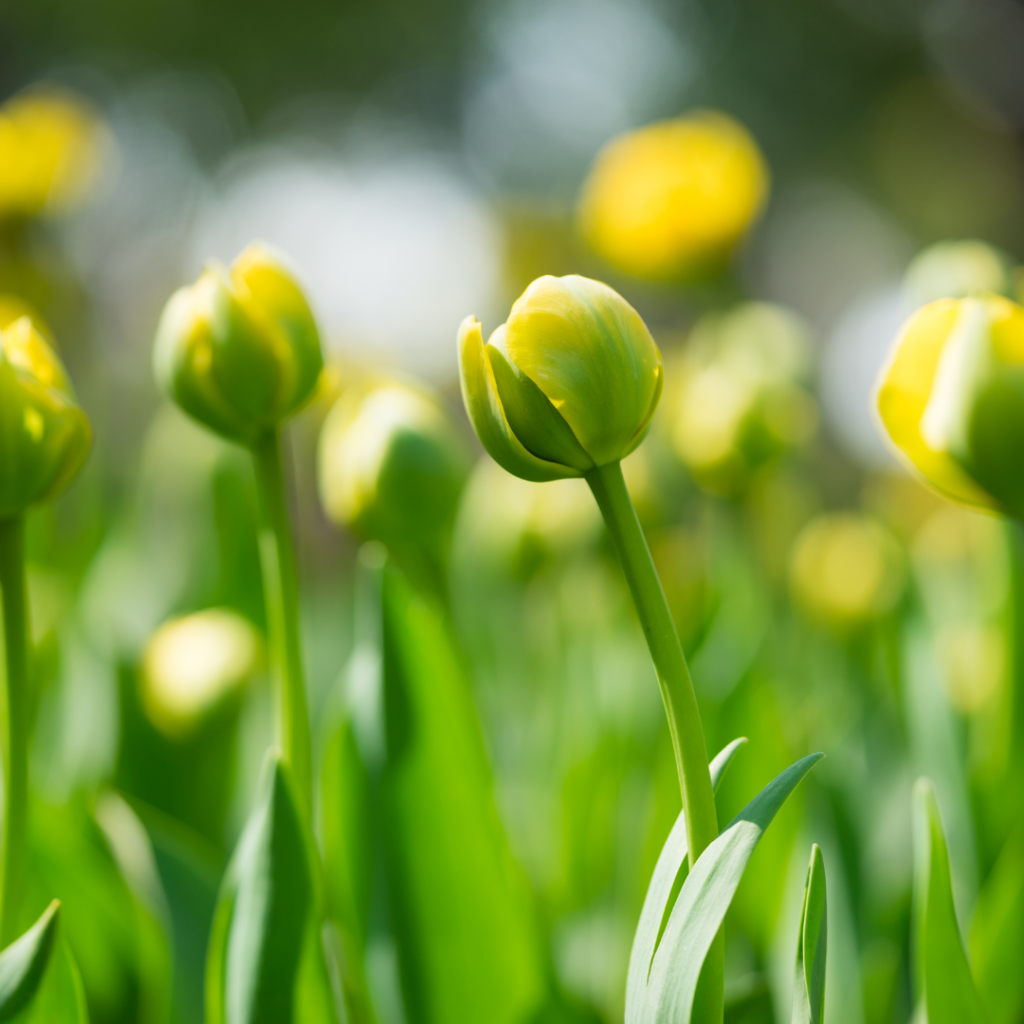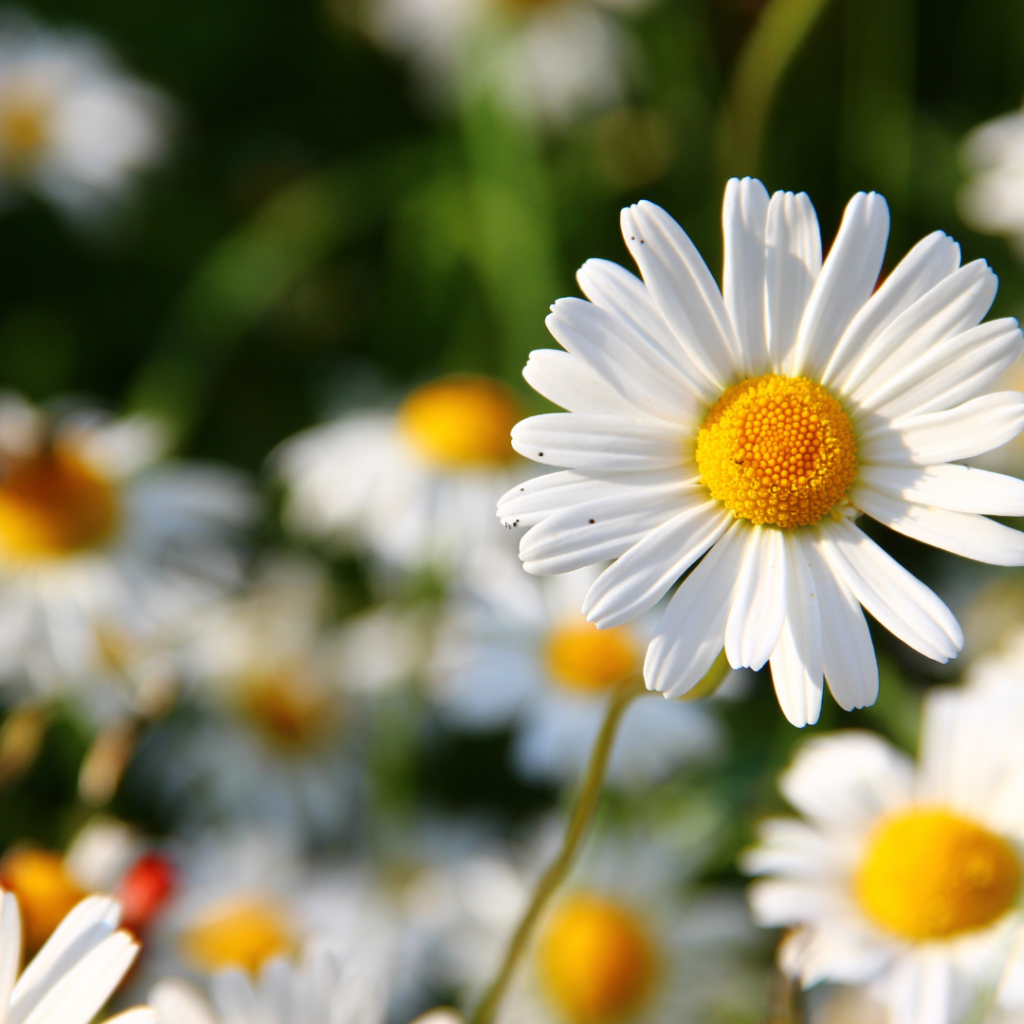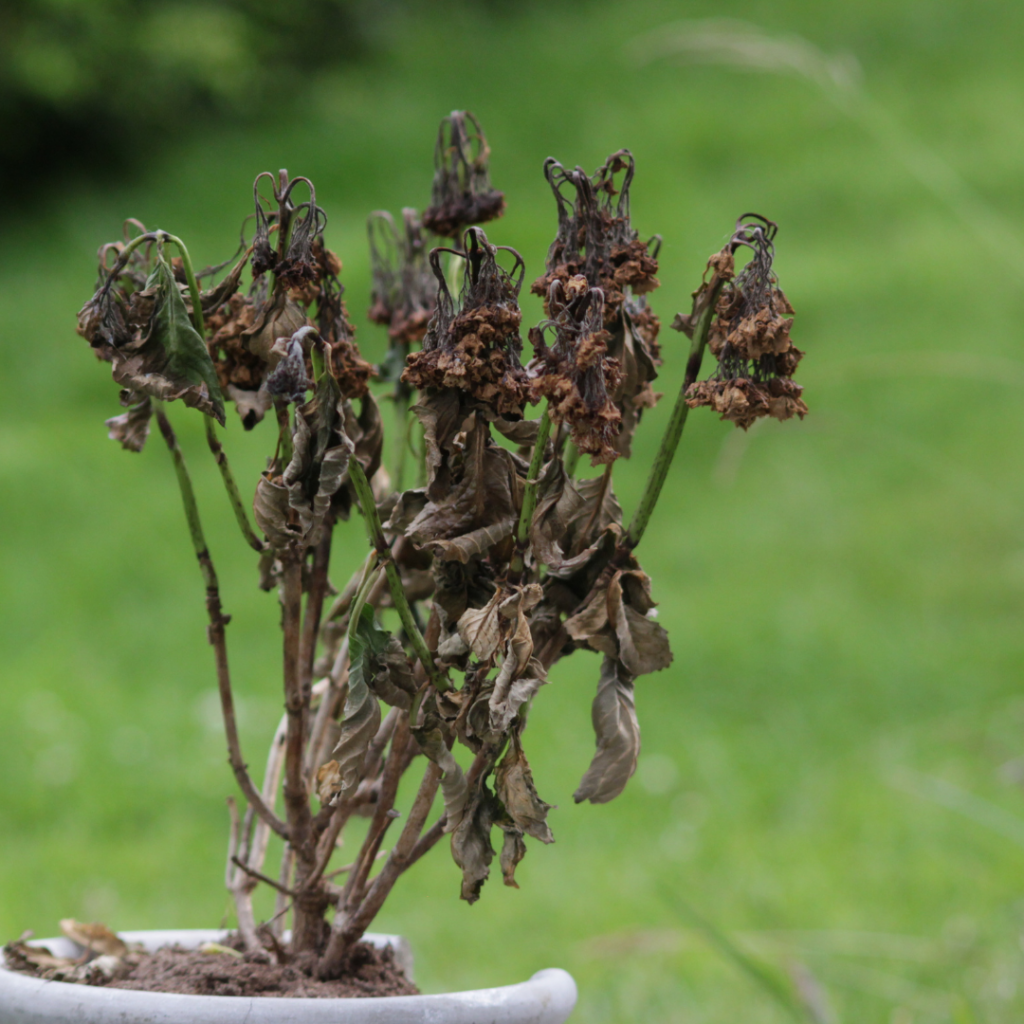The cream-white, gracefully curved blossoms of a Peace Lily are the plant’s most attractive characteristic, and inquiries concerning Spathiphyllum plants’ flowers are often asked. New owners have questions about the frequency of blooming, shelf life, and methods for increasing production. Let’s talk about peace lily flowering stages.
A Spathiphyllum must be fully grown before it can naturally blossom, which usually takes at least a year. Creating favorable growing circumstances is the main factor in encouraging it to produce blooms, while eliminating old flowers may also be beneficial. It is very important to review what to anticipate from your Peace Lily’s blossoms, from their first appearance until the day they drop.
The four separate phases of a peace lily bloom include budding, blooming, producing seeds, and dying. Spring is when peace lilies blossom. You can get the most out of your flowers by providing them with water, sufficient light, frequent fertilizer, and a warm growth environment.
You will receive a quick introduction to Peace Lily flowers in this article. Surely, you will master your plant’s flowers by the time you’re through.
RELATED: Brown Trees: Everything You Need To Know About Them
What Does The Peace Lily Flower Look Like?
When compared to other popular flowers like roses and petunias, the blooms of a peace lily are distinctive. Each one has a single petal with a pointed hood form that emerges from a thick, knobby spike.
The spadix is that lumpy structure that resembles the head of a medieval mace. The little protrusions jutting out from the spadix on all sides of your Peace Lily plants are its actual blossoms. There are many more flowers inside of what is only one.
The spathe is the thin white sheet that spreads out behind the spadix. The spathe resembles leaves in form, being ovoid and pointed. It is a leaf, even if photosynthesis isn\’t its primary function. Its purpose is to both shield the blooms from harm as they grow and to attract pollinators with its dazzling white hue. The inflorescence is made up of the spathe and spadix together.
If you’ve owned previous aroids, their fundamental structure may appear familiar to you. This category includes several popular houseplants, such as Anthuriums, Monsteras, ZZ Plants, and Pothos.
The spathe and spadix are the fundamental components of all aroid blooms. Yet even within that layout, there\’s a lot of variability. Although some aroids have eye-catching brilliant spathes, others have subdued green flowers. From small Duckweed plants the size of quinoa grains to the enormous Titan Arum, which has a 10-foot-tall spadix and smells like rotting flesh, they are all different sizes.
Four Peace Lily Flower Stages
1. Budding

It is easy to miss a fresh Peace Lily flower. Early buds resemble young peace lily leaves, giving some insight into their beginnings. The spathe of a new peace lily bloom, however, is a modified leaf that developed to shield the spadix. Thus it often only appears as fresh greenery.
2. Flowering

The bud will unfold like a leaf when it has reached maturity. As the spadix emerges, the spathe gracefully unfolds around it to frame the developing bloom.
As the bloom develops, each small bud will open, luring pollinators.
It is difficult to see the structures of flowers with the naked eye because they are so tiny and tightly packed inside the spadix.
3. Seed Production

If the Peace Lily plant is fortunate, the process will proceed to the next stage after the small blooms are pollinated. The peace lily blooms gradually shrink back to their original size and morph into little berry-like structures.
The pebbly texture becomes more apparent as the spadix darkens.
At this stage, the spathe often begins to wilt. Consequently, the tip can lose its bright white hue or become yellow or brown.
Many gardeners opt to clip off the tops of their Peace Lilies as the spathe begins to turn brown. This enables the plant to focus energy on the growth of the leaves or new blooms instead than on producing seeds.
It also prevents the Lily from being swamped with flowers that are already half-dead.
4. Flower Death

If you leave it where it is, the withering flower will continue to disintegrate and scatter its seeds. Finally, the spathe fades off when the seeds develop and fall from the spadix. It deteriorates like any other leaf, becoming brown or black and shriveling. The spadix breaks down.
In general, we recommend getting rid of dead blooms before they get to the point of dispersing seeds. It is a chaotic phase of the plant\’s life cycle and accomplishes nothing to strengthen the parent plant.
It may also attract pests, and the blossoms stay on the plant for a more extended period of time, the fewer fresh new blooms the plant produces.
RELATED: How to Repot A Peace Lily: Helpful Tips To Avoid Transplant Problems
A Peace Lily Flower’s Life Cycle
Peace Lily blossoms contain both male and female components – but not simultaneously. Evolution has divided the plant\’s reproduction into male and female stages to reduce the likelihood that it would self-pollinate.
The female stage starts off first and officially kicks off as soon as the spathe starts to unfold. Each spadix bump has a little, fuzzy, white nub at the tip of it that may be seen if you look carefully. They are the tiny apertures where pollen may enter the blossoms.
The pollen doesn\’t appear until the female stage is through, so they’ll have to get it from another flower. 4 or 5 days should pass after the spathe opens at that point. As the spots at the tips of the spadix lumps become brown, you’ll know it’s time.
Between the tips of the spadix, the pollen-bearing anthers emerge. They seem to be small clumps of white fluffy material from a distance. They seem like little strands of silly thread up close.
Another 4-6 days pass during the male stage. Your Peace Lily’s top leaves may gather up a small coating of white pollen while it\’s happening. You could assume that mealybugs are attacking your plant if you weren’t expecting it.
After the pollen-bearing phase ends, the spadix will become green. But this green coloration is different to the dark green foliage. The spathe often stays healthy and white for another two to four weeks. The whole inflorescence then starts to darken and dry out.
The spikes will develop into huge berries instead of contracting and crumpling if some beneficial insect has pollinated the flower. The seed pod will remain and mature for many further weeks. As the pod becomes dark brown and is loaded and packed with seeds, you may attempt to harvest and sprout the seeds. Further details on raising Peace Lilies from seed may be found here.
How Long Before Peace Flowers Will Bloom?
The Spathiphyllum plant originated in tropical settings with minimal seasonal change in the amount of sunshine and temperature. Hence, they lack a natural cycle of blooming and dormancy. As long as you continue to keep them healthy, they stay green.
Your Peace Lily won’t likely blossom in the winter, however. The blossoming of Peace Lilies is significantly influenced by bright, indirect light, warm temperatures, and humid air. In most northern residences, the autumn and winter months don’t get enough sunlight for these plants to blossom.
Late spring and early summer are often the times when peace lilies bloom. The plant must rebuild its energy after that first blooming burst before it can bloom once again. Early fall may see the blooming of a second set of blooms by healthy, mature Peace Lilies. Unless you utilize grow lights and humidifiers to generate year-round tropical conditions, that’s often the upper limit.
The fact that Peace Lilies will blossom once they are extremely young should also be kept in mind. For a Spathiphyllum to produce an inflorescence, it must be at least a year old. And if the plant is developing slowly, it can take much longer for it to mature.
Many people maintain Peace Lilies in darker settings than the plants like because they can tolerate shadow. These unfavorable circumstances might make it take a Spathiphyllum longer to get big enough to blossom.
Be aware that some cheating occurs when professional growers are trying to get their plants to blossom attractively for consumers. They\’ll provide a hormone called gibberellic acid to their Peace Lilies to force them to blossom sooner than usual. Don’t expect a little Peace Lily you purchase from a garden center to bloom again right away once its blossoms fade. The plant may not be fully mature for another year or two.
How Long Do Flowers From Peace Lilies Last?
One benefit of Peace Lily flowers is that, once they appear, they may last for a long. The spathe should stay fresh, white, and healthy for around a month as it unfolds. It could go on longer. The maximum normally lasts for two months.
A fresh stalk coming up from the base becomes a Peace Lily blossom at first. Each flower has a stem of its own, much like the leaves. The white spathe will be seen wrapped around the tip in the form of a hook or a cone. It can take a few weeks for it to grow to its maximum height. Yet eventually it will push through the undergrowth and unfold its beautiful white spathe.
The bloom is about to end if the spathe starts to shrink and become brown. Once more, this will typically be 1-2 months after the opening date. The crumpled spathe remnants on the end of the stalk will cause it to wither and become brown, like a piece of hay. The dead stem won\’t ever blossom again, so there\’s no sense to keep it around.
Are Peace Lily Flowers Aromatic?
Not all aroid flowers have pleasant scents; the Titan Arum’s foul odor has previously been brought up. Several other foul-smelling flowers, like the appropriately called Skunk Cabbage, are members of the Araceae family.
Nonetheless, peace lilies have a lovely and delicate fragrance. Other types don’t appear to have any scent at all, and many people never seem to perceive it. If you do smell your Peace Lily, it will probably be at night. At dusk, the blossoms’ aroma is stronger.
What Causes Greening of Your Peace Lily Flower?
The traditional Peace Lily appearance of large, green foliage and dazzling, white blossoms is well-known to all indoor plant enthusiasts. What is the cause of the greening of the spathe behind your Peace Lily flowers?
Keep in mind that the spathe is a leaf and not a component of the bloom. The inflorescence no longer needs to attract pollination insects as it approaches the conclusion of its life cycle. The stark white flag is thus superfluous. The spathe may sometimes attempt to harness photosynthetic processes to benefit itself. Chlorophyll production begins, causing it to become green.
If the flower has been pollinated, there is a significantly higher chance that the spathe will become green. It seems sense that the plant would want to focus as much energy as possible on the growing seeds. It is motivated by this urge to create more chlorophyll.
The quantity of green in the spathes varies somewhat amongst Peace Lily kinds, much like the potency of the perfume. Some cultivars lack or hardly contain any green in the transition from white to brown.
What if the Peace Lily flowers on your plant are turning green before they should? Or maybe they aren’t even becoming white? Several manuals identify illumination problems as the root culprit. Unfortunately, nobody is able to concur on whether it refers to too much or too little light.
One possibility is that the flowers might become green as a result of both extremes. A Spathiphyllum may produce more chlorophyll in low light in an effort to capture any available energy. Nevertheless, Peace Lilies dislike glaring direct sunlight. The spathes may be pushed into photosynthesis by too much solar exposure.
Our recommendation is to maintain your Peace Lily in bright, indirect light and stay away from locations where the sun will directly touch the flowers. Know more about Peace Lily flowers turning green and how to avoid it.
Why Are the Flowers On My Peace Lily So Tiny?
Although little blooms are better than none, they nonetheless show that there is a problem with the Peace Lily. The plants will sprout little blooms as they become older.
It takes the plant some time to get the hang of things, so before they find its groove, you could witness a few small, cute efforts. When the circumstances are almost ideal for blossoms but not quite there, they will also produce tiny flowers.
Prioritize checking all of your finer, more often forgotten care needs, including fertility and temperature. No flowers are more likely to grow in the absence of light and water than a few little ones.
You could have begun with a seed variety that yields little blooms. One cultivar of a dwarf Peace Lily with small blooms is Spathiphyllum x Wallisii.
How to Increase Your Peace Lily’s Blooms
Making your Peace Lily as content and comfortable as you can is the best course of action to increase the number of peace lily flowers. For every plant, flowering has a significant resource cost. It will need more energy to spare to produce blossoms if yours is stressed out due to unfavorable growth circumstances.
For your peace lily to bloom profusely, it\’s crucial to have the following factors right:
1. Light
The most probable cause of a Peace Lily\’s failure to bloom is because it isn’t getting enough sunshine. These plants are known for tolerating shade, thus they often end up in places with poor lighting. On the other hand, a Spathiphyllum blooms more quickly when it receives at least 6 to 8 hours of direct sunshine each day.
2. Water
Watering Peace Lilies either excessively or insufficiently is another common error. These plants dislike it when their roots completely dry up. Every few days, check the soil of your Peace Lily, and when the top inch of soil is dry, give it a nice bath. If someone advises you to water your plants before the leaf begins to wilt, ignore them.
The potting mix should only sometimes be saturated with water. It will suffocate the roots and often result in their decay. You\’re most likely watering the soil too often if it appears to never dry out.
3. Soil
Avoiding overwatering is made considerably simpler by using the proper growth media. Maintain your Peace Lily in a potting mixture that has a significant amount of large-grained materials, such as pumice or pine bark. This particular mix was made particularly for aroids, and it works well as it keeps the soil moist but does not oversoaked them.
Repotting peace lilies in good soil mix is also a good option especially if your plants are in the same soil for years.
4. Climate
When circumstances are comparable to those in the rainforests where peace lilies grow, they bloom at their finest. Fortunately, they like temperatures that are similar to those of people. The production of flower buds is particularly dependent on the temperature at night. Keep your plant\’s temperature at night between 65 and 68 degrees Fahrenheit.
At this time, you want the moisture to remain at least 50%. Place a tiny humidifier next to the plant based on where you reside.
5. Fertilizer
A Spathiphyllum does not use excessive amounts of fertilizer. However, it does need certain nutrients that it cannot get from the air or the water to produce flowers. If you don\’t make up for its food deficiencies, it will only sometimes, if ever, blossom.
Your Peace Lily should get all the nutrients it needs from any decently balanced houseplant fertilizer. Peace lilies are in the best shape when they are not overboard with fertilizers. Apply it to your plant\’s water every six weeks throughout the growth season, starting with half the quantity suggested on the box. Avoid fertilizing your Peace Lily in the winter and when it has insect problems or other health difficulties
6. Deadheading
After the blooms have peaked and are starting to wilt, cutting them off is a good idea. This not only improves the look of the plant but also makes resources available for the next blooming cycle.
You may remove it as soon as a bloom begins to droop and turn brown. Use rubbing alcohol or even a 10% bleach solution to sterilize a pair of garden shears. Next, cut as much of the stem and blossom off as you can. Make an angled cut just above the point where the stem separates from the remainder of the plant.
Read more about trimming peace lilies.
Final Thoughts
Ideally, you now clearly understand how the blooms on your Peace Lily bloom, develop, and fade. Also, you are aware of how to encourage your plant to produce the most flowers. When taking of these simple yet beautiful plants, remember that only a well-fed, well-cared-for healthy Peace Lily ought to bloom profusely!
That’s all our facts about peace lily flowering stages, hope you enjoy this article. Check out our other articles:
Hold Your Peace: 15 Types Of Peace Lilies
How To Save An Overwatered Peace Lily From Dying? A Comprehensive Guide







